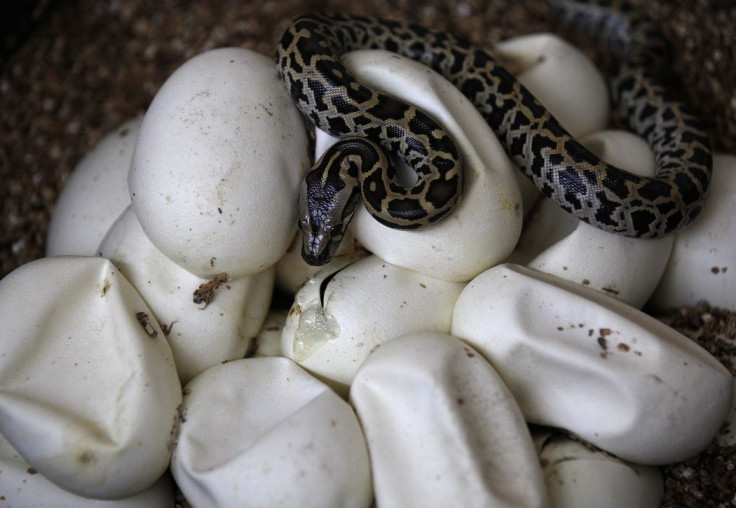Discovery Suggests That "Virgin Births" May Be Common in the Wild

Virgin births have been discovered in wild vertebrates for the first time, suggesting that reproducing without the need for a male may not be so rare in the animal kingdom.
Scientists found that two wild snake species: the copperhead snake and the pit viper snake can reproduce fertilization from a male in a process called facultative parthenogenesis, in which an unfertilized egg develops to maturity.
Experts noted that while asexual reproduction is common among invertebrates, or animals without backbones, birth via parthenogenesis rarely occurs in vertebrates, and have only been observed in vertebrates in captivity to females that have been kept away from males.
Previously, scientists have discovered virgin birth in species like the Komodo dragon, sharks and in birds like chicken and turkeys as well as in snakes like pit vipers and boa constrictors, but the latest discovery was a first because scientists had never seen it happen in the wild.
The latest discovery, published in the journal Biology Letters, suggests that that more "normally sexual" species can reproduce asexually and may change the general understanding of animal reproduction and vertebrate evolution.
Lead researcher Warren Booth, a molecular ecologist at the University of Tulsa in Oklahoma, captured pregnant wild copperheads and cottonmouth pit vipers, which gave birth in the lab.
Researchers said that males from both species had been around, but it appeared the snakes in this case preferred to "go it alone". From a collection of 22 copperheads and 37 cottonmouth pit vipers, researchers found one female in both groups that had a virgin birth.
"We just sat there stunned at the discovery," Booth said, according to LiveScience. "This is something that we always believed existed, but in order to investigate it, it would take a massive amount of work in the field. ... To detect it in both species in our first attempt was astounding."
"I think the frequency is what really shocked us," he said.
"In the copperhead population, we detected one instance in 22 litters, whereas in the cottonmouths, it was one in 37 litters. Essentially, somewhere between 2.5 and 5 percent of litters produced in these populations may be resulting from parthenogenesis. That's quite remarkable for something that has been considered an evolutionary novelty, even by me up until this finding," he explained.
Earlier this year, Booth and his team also discovered a checkered garter snake had successive virgin births and produced only males.
Scientists said that they will know in the next two to three years if the offspring are viable. Researchers said that if the offspring can reproduce, it will open an "entirely new avenue for research". A virgin birth occurs when an egg grows and develops without being fertilized by a sperm, which also means that the child only has its mother's DNA.
Scientists are still unsure as to whether the female snakes actively choose to reproduce this way or whether this type of birth is triggered by some other factor like a virus or a bacterial infection.



























